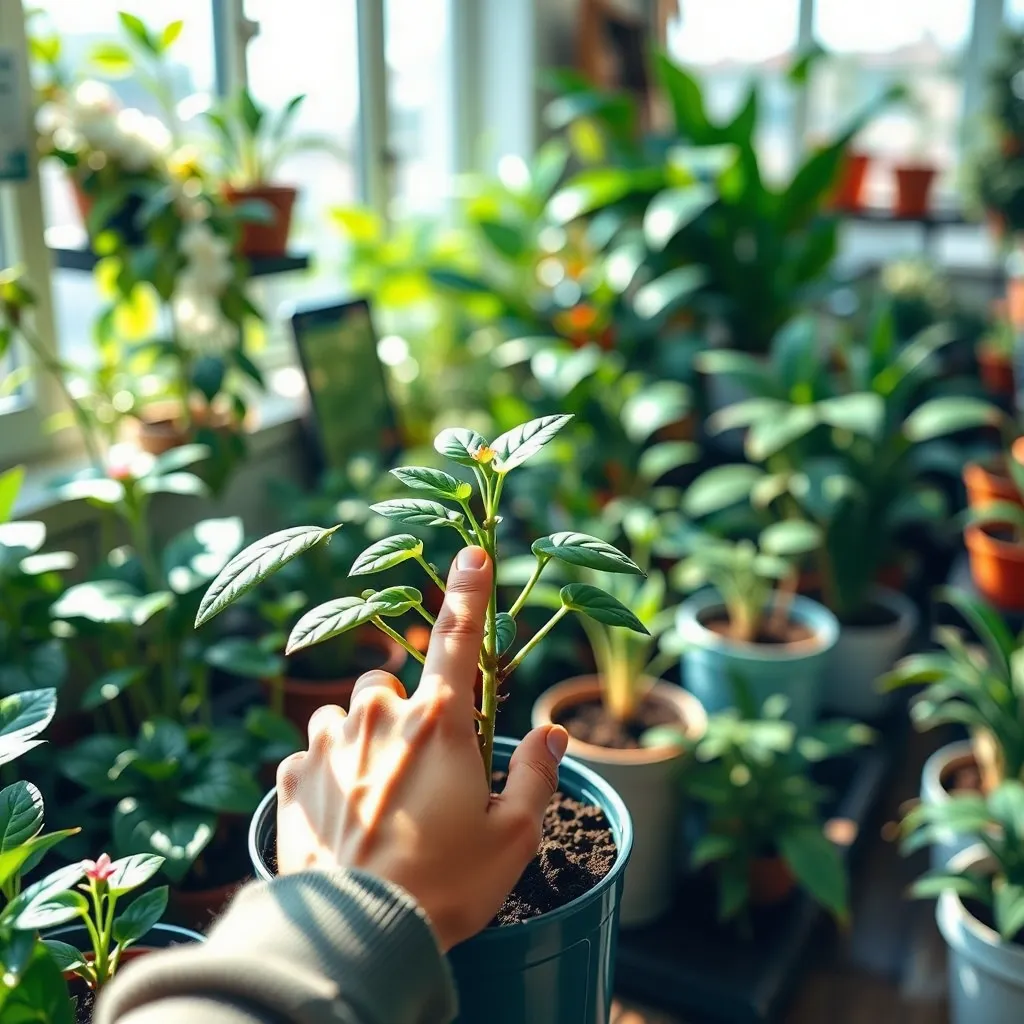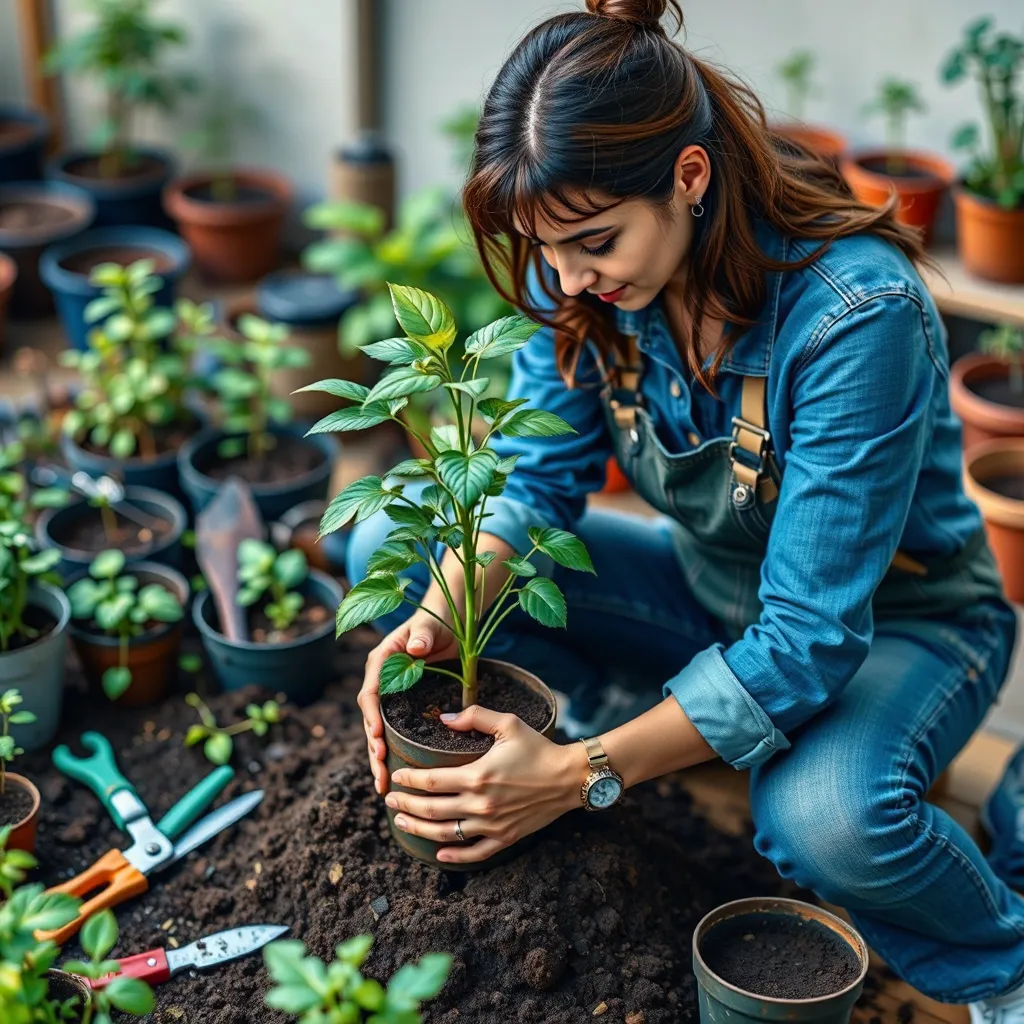Plants are a wonderful addition to any home, offering not only aesthetic beauty but also health benefits such as improved air quality and reduced stress levels. However, keeping them vibrant and healthy can sometimes be challenging. If you find yourself with a plant that appears to be on its last leg, don’t despair. Reviving a dying plant can be a rewarding experience, and with the right approach, you can bring it back to life. This comprehensive guide provides expert tips on how to revive a dying plant, covering everything from proper watering techniques to understanding plant health issues.
Understanding Plant Health
Before diving into the revival process, it’s crucial to understand what contributes to plant health. Plants require the right balance of light, water, air, and nutrients to thrive. When one or more of these elements is out of balance, it can lead to poor plant health. Understanding the specific needs of your plant species is the first step in diagnosing and addressing health issues.
Common Causes of Plant Decline
- Overwatering or Underwatering: One of the most common mistakes in plant care is improper watering. Overwatering can lead to root rot, while underwatering can cause dehydration and nutrient deficiency.
- Inadequate Light: Different plants have varying light requirements. Too much light can scorch leaves, while too little can stunt growth.
- Poor Soil Conditions: Soil that lacks nutrients or has poor drainage can affect plant health.
- Pest Infestations: Insects and other pests can damage leaves, stems, and roots, leading to plant decline.
- Disease: Fungal, bacterial, or viral infections can cause various symptoms, including wilting, discoloration, and stunted growth.
Steps to Revive a Dying Plant
1. Assess the Situation
The first step in reviving a dying plant is to assess its current condition. Look for signs of stress such as yellowing leaves, wilting, or brown spots. Check the soil moisture level by sticking your finger about an inch into the soil. If it’s dry, your plant may be underwatered; if it’s soggy, overwatering is likely the issue.
2. Proper Watering Techniques
Understanding how to water plants correctly is crucial. Here are some tips:
- Consistency is Key: Water your plants consistently, but allow the soil to dry out slightly between waterings to prevent root rot.
- Watering Method: Water at the base of the plant to ensure the roots get adequate moisture. Avoid wetting the leaves as this can lead to fungal growth.
- Drainage: Ensure that your plant’s pot has drainage holes to prevent water from pooling at the bottom.

3. Optimize Light Conditions
Different plants require different amounts of light. Consider the following:
- Identify Light Needs: Research your specific plant’s light requirements and adjust its location accordingly.
- Natural Light: Place plants near windows that provide the right amount of natural light. South-facing windows typically offer the most light.
- Artificial Light: For indoor plants that require more light, consider using grow lights to supplement natural light.
4. Improve Soil Quality
Soil quality plays a significant role in plant health. Here’s how to enhance it:
- Repotting: If the soil is compacted or lacks nutrients, consider repotting your plant with fresh, well-draining potting mix.
- Fertilizing: Use a balanced fertilizer to provide essential nutrients. Be cautious not to over-fertilize, as this can harm the plant.

5. Address Pest and Disease Issues
Pests and diseases can severely affect plant health. Take these steps:
- Identify Pests: Look for common signs of pests such as webbing, holes in leaves, or sticky residue.
- Natural Remedies: Use natural pest control methods like neem oil or insecticidal soap.
- Disease Management: Remove infected parts of the plant and apply fungicides or other treatments as needed.
6. Pruning and Trimming
Pruning helps stimulate new growth and remove dead or damaged parts of the plant. Here’s how to do it effectively:
- Deadheading: Remove dead flowers to encourage new blooms.
- Trimming Dead Leaves: Cut off brown or yellow leaves to prevent the spread of disease and improve appearance.
- Shaping: Prune to maintain the desired shape and control size.
Long-term Plant Care Tips
Once your plant is back on the road to recovery, maintaining its health is key. Here are some long-term care tips:
- Regular Monitoring: Keep an eye on your plant’s condition and adjust care routines as needed.
- Seasonal Adjustments: Adapt your care routine based on seasonal changes, as light and temperature can vary.
- Continual Learning: Stay informed about the specific needs of your plant species.
FAQ Section
Q: How often should I water my indoor plants?
A: The frequency of watering depends on the type of plant, pot size, and environmental conditions. Generally, water when the top inch of soil feels dry.
Q: What are the signs of overwatering?
A: Signs include yellowing leaves, root rot, and wilting despite wet soil.
Q: How can I improve the drainage of my plant’s pot?
A: Ensure the pot has drainage holes and use well-draining soil. Adding a layer of gravel at the bottom can also help.
Q: Can all plants recover from being near death?
A: While many plants can recover with proper care, some may be too far gone if the roots are severely damaged.
Q: What is the best way to prevent pest infestations?
A: Regularly inspect plants for signs of pests, maintain good hygiene, and use preventative measures like neem oil.
Reviving a dying plant is a journey that requires patience and dedication. By understanding the specific needs of your plants and providing the right care, you can enjoy the beauty and benefits of a thriving indoor garden.
Share this content:

